Dextro, an anonymous artist, makes generative video art, and has been working on it since the mid-90s. His work looks like waves in one shot and like glitchy fields in another. I find it interesting because he had begun as a 3D artist working in the architecture field. His work, therefore, were influenced by creating physical landscapes in virtual spaces. Dextro exclusively uses Processing, finding relationships between different parts of his work. As he worked in an architectural setting, he was influenced by creating vast landscapes through algorithmic procedures – some real, some fantasy-like. He finds that experimenting with code introduces interesting art – when the script is unstable, the change can be surprising. He switches between oil painting and Processing, and believes that painting simulates physical algorithm. He also codes straight from his oil paintings, trying to represent all the interesting parts of the oil paint using code.
Category: LookingOutwards-02
aboyle-Looking Outwards-02
Above: Growth by Aggregation, by Andy Lomas
For this blog post, I have chosen to discuss a series of works by Andy Lomas titled “Aggregation.” His website can be found here: www.andylomas.com, and this series in particular can be found here: http://www.andylomas.com/aggregationImages.html. I believe the images were created in 2005.
First and foremost, I admire the complexity of the end result. He provides a pixel image at ½ the full resolution on his website and it is still stunning. I think that the math behind the project actually enhances the appeal of the final image, lending it a sense of calculated spontaneity. The second reason I admire the series is its resemblance to plants and coral. It draws on nature as an inspiration, forcing the viewer to think about the incredibly complex processes behind the creation of living things. Ultimately, it is not only pleasing to look at, but also interesting to think about.
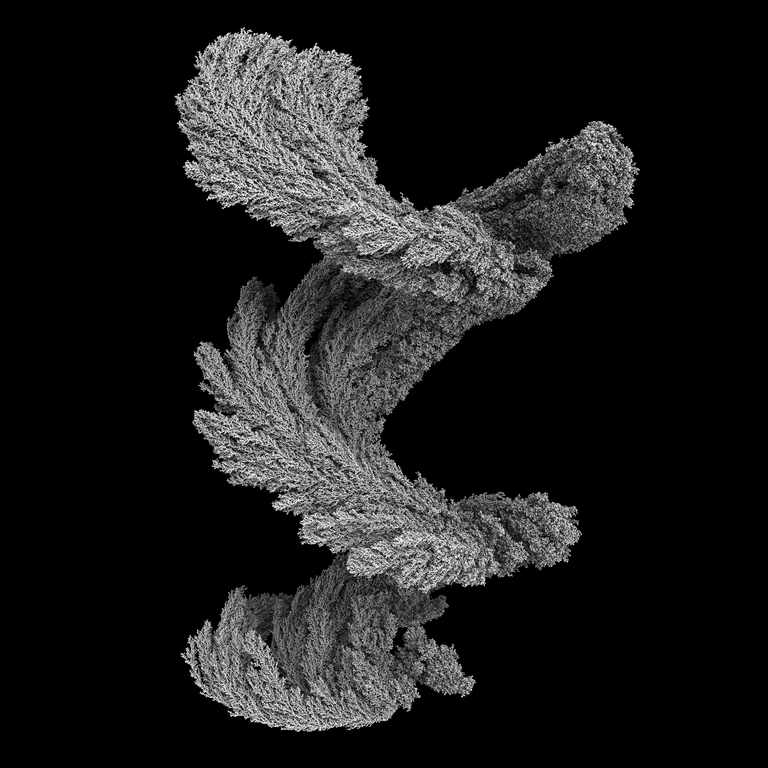
Above: Aggregation 6, by Andy Lomas
The images in “Aggregation” are gradually created by “simulating the paths of millions of particles randomly flowing in a field of forces”. By building on top of a simple foundation, the algorithms involved were able to create incredibly complex structures. My knowledge is rudimentary, but I’d imagine the algorithms involved are fairly complicated. However, there are aspects of repetition that aesthetically improve the final images and presumably simplify the algorithms somewhat.
I also did a little research into Lomas, and I discovered that he has a passion for morphogenesis, which is the biological process that causes an organism to develop its shape. This clearly impacts his work, specifically the aggregation series. The process of accretion in his work is similar to those found in the natural world, and as a result the final images resemble plants and coral. Lomas is very upfront about this influence; he quotes D’arcy Wentworth Thompson, a pioneer of mathematical biology, as an inspiration. As I mentioned before, I admire his passion and I believe it resulted in harmonious and thought-provoking work. I hope that artists and mathematicians will continue looking to the natural world for inspiration.
ssharada-looking-outwards-02
Notional Field is an interactive installation created by Annica Cuppetelli and Cristobal Mendoza. The work is a wall-mounted sculpture containing vertical and parallel elastic like cords that are projected onto a flat surface. The motion of these lines are determined by an algorithm that forced them to respond to any movement in direction that occurs directly in front of them. What I found really interesting about this project is how it looks so three-dimensional – when the cords move around there is shadow movement that makes the work seem all the more believable. Furthermore, when the cords are pushed towards a corner of two walls, they almost bounce off and project onto the adjacent wall that makes the cords look as though they are actually jumping off of the wall.
According to the artists, the piece revolves around the idea of interface, which is interpreted as the point of contact between two different entities, and is displayed in the work in several ways: between the viewer and the piece (a human/computer interface); between the real and the virtual (the physical structure and its relationship with the projected structure); between the foreground and the background (as the projection interferes with the sculpture).
ljkim – Looking Outwards 02
Vergance – short version by Tina Frank
vergence (short version) from Tina Frank on Vimeo.
This project focuses on the threshold of spatial perception. The artist uses geometric shapes and consistent color scheme to be consistent. I think it works effectively in this case because it captures the audience’s attention. The artist also uses a sound track to accompany the piece which also effectively works to create a wholesome experience. I admire the simplicity of the work but being able to capture someone’s attention for something so basic.
I’m assuming that the project uses set variables and the random function. But majority of the video graphics seems intentional and designed. I can also see the artist using a function that I am unaware of that spreads the squares evenly.
Nayeon-Looking Outwards 02
Quayola is a visual artist based in London. He creates digital sculptures and installation arts that consist of unpredictable collisions.
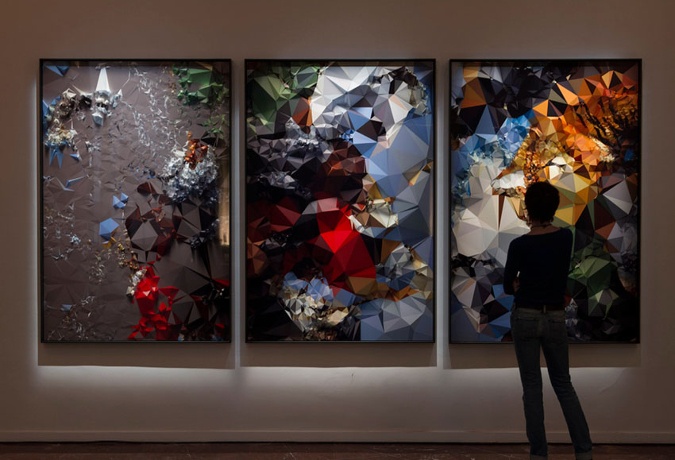
I love his work that he create algorithm to form various sculpt with combine old and new, real and artificial, time and space using delaunay triangulation algorithm. Delaunay triangulation which he uses to generate his work is new trend for modern arts and quite many modern artist use computer algorithm to investigate new way of using color and shapes. Here is a image of processing digital work out of classic art piece.

I admire his work as he uses classic arts and old beauty into new born beauty. Top of that, he creates immersive audiovisual installation to intensify his work in exhibitions. He is not only digital media artist, but installation artist using audio and visual to create whole space surrounding the art. The matter of size in a space that he gives to audience have them shock and amaze. He said this is not just media, but the project bridge a communication between people and space.
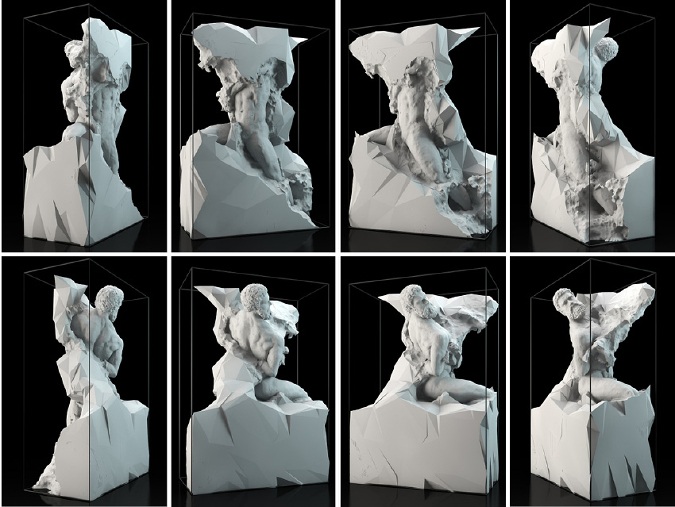
jamieh-LookingOutwards-02

Michael Hansmeyer uses algorithm to generate architecture that is almost impossible to imagine, draft and model by hand. He is inspired by nature and its concept of cell division, which he ties together with architecture. In his TED talk, he talked about how we can fold paper multiple times until we are limited by ourselves and/or the folded material thickness. However, by using the computer to help generate these actions, such actions are possible. His example showed a cube being folded in multiple directions and ways to become a completely different form. He uses code to control the folding, such as ratios, so that he is designing the process instead of the form. This process can then generate an infinite amount of possibilities to the final form. Although the form becomes complex, it can be realized through 3D printing to become a part of architecture. His work Subdivided Columns (2010) was designed with such algorithm to take an abstracted doric column and let it evolve digitally into an elaborate, ornamental column.
What I admire about Hansmeyer is his openmindedness to the many possible end results to an architectural form. I would love to see what other types of rules he can apply to his code (other than folding) that can generate another set of possibilities.
hannajan-LookingOutwards-02
Video above depicts demonstration of The Classyfier
I reviewed some of the recommended blogs and websites on generative art and stumbled upon one called The Classifier (2017) by Benedict Hubener, Stephanie Lee, and Kelvyn Marte. It is a table with AI that detects the situation and the sounds of beverages being consumed to choose music that fits the situation accordingly.
The algorithm that generates this art, takes into account the different sound patterns that are characteristic for each drink from pre—trained examples. The creator’s artistic sensibilities are manifest in the algorithm through how well each situation or drink type is detected and the type of music that then ensues to fill the ambiance.
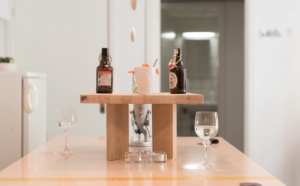
Pictured above: The Classifier
I chose to review this particular art piece because I think it is one that was created for a useful purpose. It can be used to elevate relaxing, improve socializations, and ease events that take place in everyday citizens’ lives. It reminded me that the skills I learned in this class can be used in a similarly useful way. Also, for future projects, I can think more about the usability of my designs and codes for the user and their experiences.
dayoungc-LookingOutwards-02
Combining Concepts and Computations into Reality
In my exploration of generative artists, I stopped at Michael Hansmeyer’s <www.michael-hansmeyer.com> work, mesmerized. Active from 2003 to the present, Hansmeyer uses existing architectural or natural forms but modifies them—sometimes drastically—or explores their boundaries using what he calls “computational architecture.
http://www.michael-hansmeyer.com/images/reade_street/reade_street3.jpg
“Seemingly a normal building renovation.”
One of his more recent projects, “Reade Street” (2016) is a prime example of this combination of existing concepts and generated computations. At first glance, the building is your typical classic building in Manhattan. Upon closer glance at the columns, however, one can see that the architectural design has been computer generated from a combination of existing forms.
http://www.michael-hansmeyer.com/images/reade_street/reade_street5.jpg
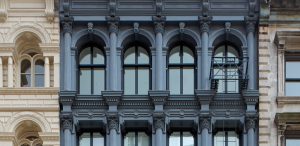
“But combining classical architecture and computation to create something new.”
This is fascinating because through computation, Hansmeyer is able to explore beyond the boundaries of ancient through modern architecture while still retaining all of the history involved in the creation of these designs. Itis an eerie blend of past, present, and future that may itself become established in architectural history.
http://www.michael-hansmeyer.com/images/inhotim/inhotim2.jpg
“Hansmeyer even combines nature and computation to create an eerie blend.”
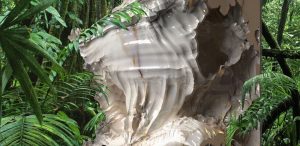
ssontag- Looking Outwards
As far as generative art goes the only knowledge I have is generative modeling used in architecture. This year I am taking a generative modeling class that will teach me how to use python within the modeling space of Rhino to use parametric modeling to influence my designs. One of the most famous architects to use generative modeling in their work is Zaha Hadid. She has been an extremely influential architect as far as women in the field of architecture, but has also been an amazing influence to me because of her work. She has always been on the cutting edge of the design world in architecture and design. Her legacy lives on through her firm Zaha Hadid Architects.
Looking Outwards 02
http://www.quayola.com/laocoon-series/


This group uses a 7-axis, milling setup to create different sculptures of the human body, in their self-proclaimed “Sculpture Factory.” I admire how they combine a renaissance style of sculpture and a more geometric, contemporary style. Their process likely consists of creating the model in a 3D program and then entering it into the mill to carve away at the EPS blocks. They probably used an algorithm to create the triangular geometries and how they attach to themselves. I would want to know how the artist planned where and how the geometries fused with the natural human body.
![[OLD FALL 2017] 15-104 • Introduction to Computing for Creative Practice](../../../../wp-content/uploads/2020/08/stop-banner.png)